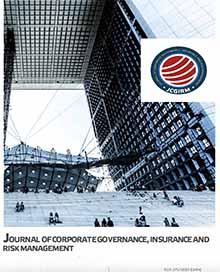Perceived usefulness (PU) and perceived ease of use (PEOU) as key drivers of mobile banking adoption : a case of Zimbabwe
Perceived usefulness (PU) and perceived ease of use (PEOU) as key drivers of mobile banking adoption : a case of Zimbabwe
Author(s): Linda C. Gumbo, Douglas Halimani, Misheck DizaSubject(s): National Economy, Business Economy / Management, Micro-Economics, Financial Markets
Published by: Acadlore Publishing Services Limited
Keywords: Self Service Technologies; Technological Acceptance Model; Perceived Usefulness; Perceived Ease of Use;
Summary/Abstract: The traditional brick and mortar buildings labeled “Banks” are fast becoming a historical notion being replaced by electronic, paperless and virtual money. Globalisation has ushered a new era resulting in availability of mobile phones to the larger populace of the world despite physical location. Mobile networking has created a platform that has seen acquisition of mobile phones which in turn has accorded billions of people Self Service Technologies (SST). These services know no boundaries. This paper seeks to explore two determinant variables of the Technological Acceptance Model (TAM) which have become major variables in the implementation of mobile banking projects. Perceived Usefulness (PU) and Perceived Ease of Use (PEOU) are arguably the cornerstones if mobile banking is to be successfully implemented, and hence adopted, in these financial services sector advancements. This Paper seeks to hypothetically explore the argument that PU and PEOU have the greatest impact on the implementation of mobile banking projects when considered in relation to other factors. The case of the mobile banking situation in Zimbabwe will be explored.
Journal: The Journal of Corporate Governance, Insurance, and Risk Management (JCGIRM)
- Issue Year: 4/2017
- Issue No: 1
- Page Range: 87-115
- Page Count: 29
- Language: English

